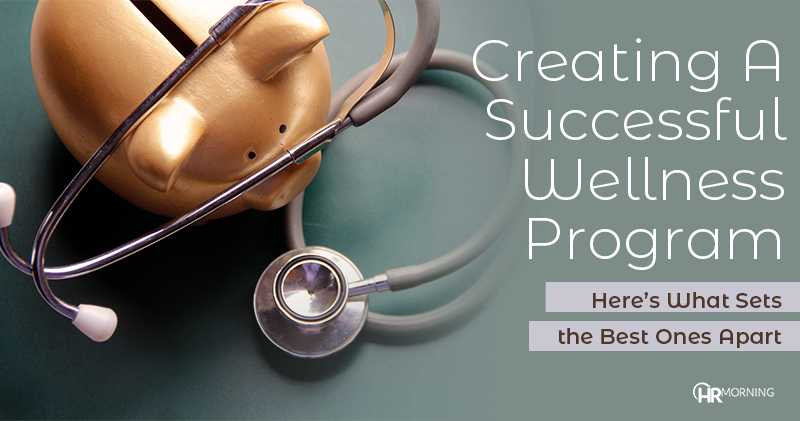In the past few years, there’s been an explosion of employers – of all sizes and from all business sectors – looking to start wellness programs to contain their long-term health costs. And when wellness programs are conceived and carried out properly, they’ve been proven to get results.
But here’s the key component for a successful wellness program: It will succeed or fail based on how thoroughly it’s planned and how well it’s communicated to employees on an ongoing basis.
Studies have shown about 75 cents of every dollar spent on healthcare is spent on treatment of a preventable illness. And that’s cause for optimism.
Why? Because if we can get our employees to think a little bit differently about the way they eat, exercise and, in general, manage their daily lives from a health perspective, there’s enormous potential for cost savings. That’s where a wellness program comes in.
Real-world wellness: A 600-employee pipe manufacturing company based in the Southeast has a wellness program that costs $145,000 per year, including the total cost of a $55 incentive for employees who undergo routine physicals. The program has detected eight breast cancer concerns, one possible prostate cancer, 16 cases of heart abnormalities and four potential liver problems. Early detection made medical intervention much more effective – and cheaper.
In order for a wellness investment to be money well spent, you have to know what’s driving your biggest claim costs on your healthcare plan and go from there.
Tailoring your program
So, what sets a successful wellness program apart from one that throws good money after bad? It’s tailoring the program to meet your company’s needs.
To have a chance at success, you can’t guess at the problems your employees are having. That means you – or a third-party your company hires – must have the capacity to drill down into your claim data.
A crucial first step for finding your health cost drivers (obesity, high blood pressure, etc.) is to have employees undergo a health risk assessment – one that is compliant with HIPAA, GINA and ADA. The results of these assessments help you get a feel for what your employees’ baseline physical problems are before you try to design a program around them.
Real-world wellness: A small employer in the computer industry gives a 10% discount off premiums for all employees who undergo health risk assessments. Four years into the program, the firm has seen its healthcare costs drop 27%. Its healthcare cost per employee is below average in most parts of the country.
To truly get to the root of employee’s health problems, you’ll need access to detailed data from a variety of areas:
- your organization’s medical-claims breakdown for the past three years
- prescription-drug claims
- employee absence information
- EAP use disability claims, and
- employee demographics (your employees’ ethnic, gender and age breakdown points to greater – and lesser – health risks associated with each category).
Make no mistake: It takes some time and costs money to explore each of these avenues in addition to having employees undergo health risk assessments. But it’s worth it.
Here’s an example of the payoff: A company in Kansas City was approached by a health insurance carrier that offered – at a discounted cost of $75,000 a year – to roll out a four-pronged wellness program to deal with any employee with heart disease, diabetes, obesity, and/or smoking. But after the company dug into its healthcare plan claim data, it learned it already had claims that were below the national benchmarks in three of those four areas the wellness program would cover. The company avoided wasting $75,000 on a program that didn’t suit its needs.
Communicate, Communicate, Communicate
As you’re assessing employee health, it’s key that you communicate with employees about wellness before launching a program. Employee focus groups are a huge help. Ask what sorts of things concern them, and what kinds of tools and programs they would use. Some employers even form “wellness committees,” comprised of both managers and rank-and-file workers.
Without question, and without exception, the wellness initiatives that achieve the greatest success are those that are communicated aggressively early on and are consistently sustained. Repetition is your friend when doing employee wellness education.
The same need for open communication remains after the wellness program is in place. To paraphrase famous TV pitchman Ron Popeil, if you start a wellness program, “You can’t just set it and forget it.”
With wellness, you’ve got to constantly track your programs on an ongoing basis because cost-drivers might shift as employees come and go from the company.
Real-world wellness: A bank in the Midwest, which paid $100 to employees to take a health risk assessment, found that a full one-third of their employees were undiagnosed with having high blood pressure. It’s impossible to know how many employees would’ve suffered strokes or heart attacks if they hadn’t gone on blood pressure meds. But even if the bank prevented just one employee from having a stroke, the company far and away saved more than they spent on everyone’s health risk assessments.
Bottom line: There’s overwhelming evidence that wellness programs pay dividends if they’re done well and done right.


